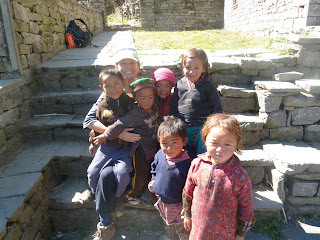Sus'dai, Selamat Malam, G'day, I'm not sure which country I'm in... actually I'm sitting in a cafe at the Kuala Lumpur airport waiting for the Air Asia night flight to Perth, having just caught the afternoon flight from Phnom Penh.
After our last post we spent 5 days at Otres beach on the coast, a long quiet beach with just a few sets of small bungalows, waves lapping, very peaceful, the perfect place to relax at the end of our journey. After that we came and spent just 1 night in Phnom Penh. We could easily have spent longer there, as it's such a nice city, with a beautiful water front spanning 2 rivers that join together and a very laid back and relaxed feel, more like the other river towns we've visited and nothing like other Asian capital cities we've been to. We also treated ourselves to a nice hotel with a pool, sauna and jacuzzi.
 |
| Otres beach from our bungalows. |
 |
| Sunset at Otres beach. |
 |
| Finally finishing off that book. (my feet got nicely tanned.) |
And now for a few statistics: In total we have cycled 3220km and walked 512km, during which time we had zero punctures, 2 minor bike repairs and four sore legs/feet. We have had over 1400 hits on the blog and visited 13 countries, including 2 very poor ones, Nepal and Cambodia.
In Cambodia in particular we've noticed the presence of a number of international aid agencies that seem to be doing some great community development work. The country really seems to be going forward in a good way after such a horrendous period of recent history. Nepal, despite all of its tourism and natural beauty, is in a worse position, but like Cambodia has emerged from years of civil war to a period of peace so hopefully things will improve.
 |
| Deep fried tarantulas at a roadside stall. There is a recipe for these in the Oxfam cookbook. |
Oxfam program in Cambodia:
 |
If you don't like spiders, try the cockroaches |
Buy gifts in Australia:
http://www.oxfamunwrapped.com.au/In the UK:
http://www.oxfam.org.uk/shop/oxfam-unwrapped
That's all for now. We will still try to remember to put up some posts from time to time now that our trip is over.
best wishes
Sean and Sama
PS The laptop ran out of power before this could be posted, so now back in Perth.

















































